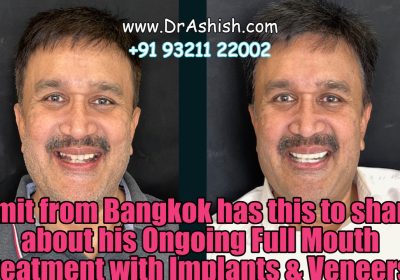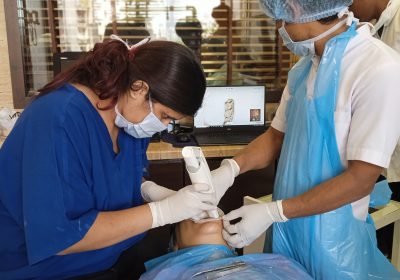Immediate Replacement of Fractured Teeth With Implants
Immediate loading of dental implants is a technique that allows for the placement of a dental prosthesis (such as a crown, bridge, or denture) on the same day as the implant surgery, rather than waiting for a healing period of several months. This approach has gained popularity in recent years due to its various advantages, but it also comes with certain considerations and limitations. Here's an overview of the advantages and important aspects of immediate loading of dental implants: Advantages: 1. Time Efficiency: Immediate loading significantly reduces the treatment time compared to traditional implant protocols, which require a healing period of several months. Patients can receive their final prosthetic restoration on the same day as the implant placement, minimizing the waiting period for teeth replacement. 2. Improved Aesthetics: Immediate loading provides patients with an immediate solution to their missing teeth, restoring their smile and facial aesthetics right away. This can be especially beneficial for patients who have lost front teeth. 3. Psychological Benefits: Patients often experience improved self-esteem and confidence when they leave the dental office with a fully functional set of teeth on the day of surgery, as opposed to waiting for months with gaps in their smile. 4. Preservation of Bone and Soft Tissue: Immediate loading may help preserve bone and soft tissue around the implant site because it encourages early functional use of the implant, which can stimulate bone remodeling and maintain gum tissue health. 5. Predictable Outcomes: When proper case selection and surgical techniques are employed, immediate loading can yield highly predictable results, with success rates comparable to traditional implant protocols. 6. Reduced Discomfort: Patients may experience less discomfort and postoperative pain with immediate loading because they do not have to endure the discomfort associated with wearing removable dentures during the healing phase. Important Considerations: 1. Case Selection: Not all patients and implant sites are suitable for immediate loading. Factors such as bone quality, quantity, and implant stability are crucial in determining whether immediate loading is appropriate. 2. Surgical Expertise: Performing immediate loading requires a high level of surgical skill and expertise. Implants must be placed with precision to ensure initial stability. 3. Prosthetic Considerations: The design and fabrication of the prosthetic restoration for immediate loading are critical. The restoration must distribute forces evenly and not overload the implant during the initial healing phase. 4. Risk of Complications: While immediate loading has a high success rate, there is a slightly increased risk of implant failure compared to traditional delayed loading. Patients must adhere to postoperative care instructions to minimize this risk. 5. Follow-Up Care: Frequent follow-up appointments with the dental provider are necessary to monitor the healing process and make any necessary adjustments to the prosthetic restoration. 6. Patient Compliance: Patients must be willing to follow strict postoperative care instructions, including dietary restrictions and oral hygiene practices, to ensure the success of immediate loading. In summary, the Immediate loading of Dental Implants offers numerous advantages, including reduced treatment time, improved aesthetics, and psychological benefits. However, it is essential to carefully select suitable cases, ensure surgical expertise, and consider various factors to minimize the associated risks and maximize the chances of a successful outcome. Patients should consult with their dental provider to determine if immediate loading is a suitable option for their specific needs. A lady reports with fracture of her front teeth. She is highly conscious as expected. Previously she had undergone an Implant and crown at another Dental Clinic but the treatment had failed. Her Fractured and Decayed Teeth are removed and replaced Immediately with Implants and Provisional Teeth. She is also advised to undergo posterior teeth replacement.




